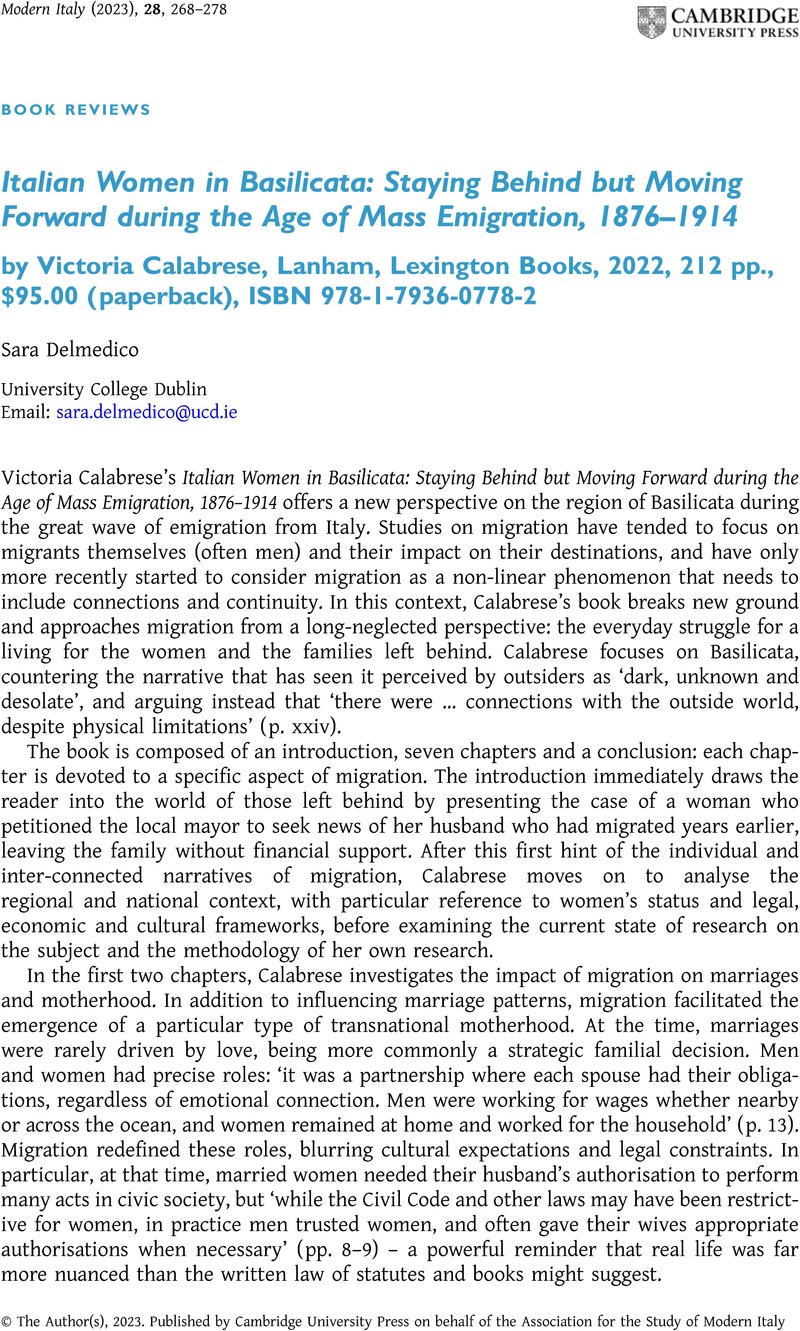No CrossRef data available.
Article contents
Italian Women in Basilicata: Staying Behind but Moving Forward during the Age of Mass Emigration, 1876–1914 by Victoria Calabrese, Lanham, Lexington Books, 2022, 212 pp., $95.00 (paperback), ISBN 978-1-7936-0778-2
Review products
Italian Women in Basilicata: Staying Behind but Moving Forward during the Age of Mass Emigration, 1876–1914 by Victoria Calabrese, Lanham, Lexington Books, 2022, 212 pp., $95.00 (paperback), ISBN 978-1-7936-0778-2
Published online by Cambridge University Press: 18 January 2023
Abstract
An abstract is not available for this content so a preview has been provided. Please use the Get access link above for information on how to access this content.

- Type
- Book Review
- Information
- Copyright
- Copyright © The Author(s), 2023. Published by Cambridge University Press on behalf of the Association for the Study of Modern Italy


